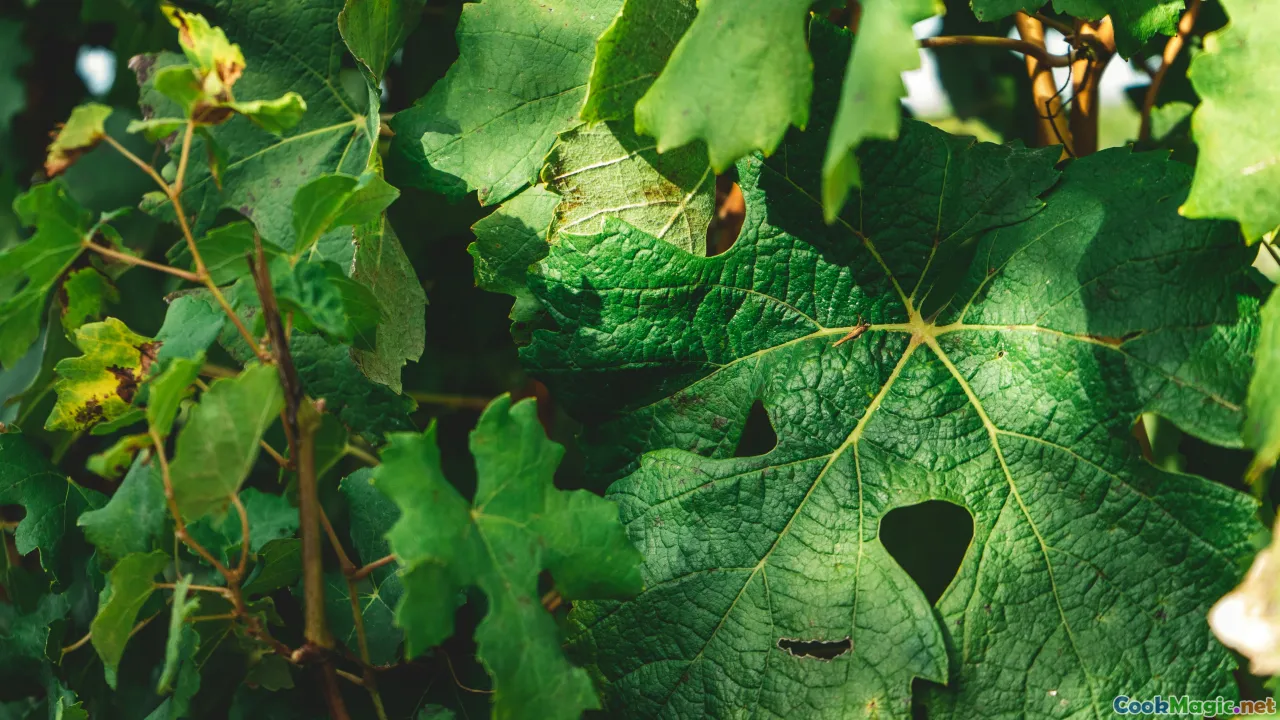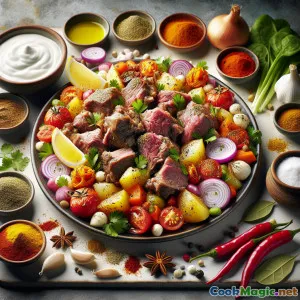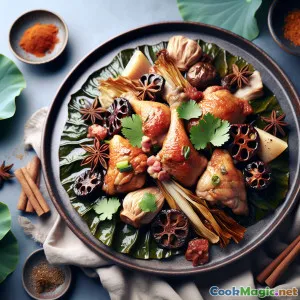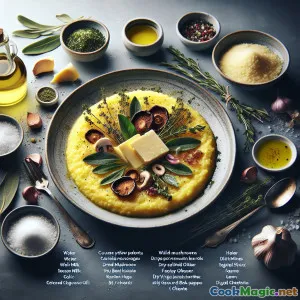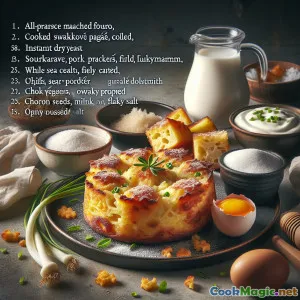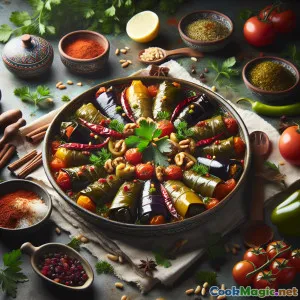
Dolmas do Jardim Otomano: Legumes recheados com ervas e azeite de oliva
(Ottoman Garden Dolması: Herbed Stuffed Vegetables with Olive Oil)
(0 Avaliações)0
59
novembro 11, 2025
Reportar um problema
Ingredientes
-
4 pieces Abobrinha (pequena, tenra)
(12–15 cm long; hollowed with a corer)
-
4 pieces Pimentões pequenos
(Green or red; tops reserved as lids)
-
4 pieces Tomates (médio, maduros)
(Tops sliced as lids; pulp reserved)
-
2 pieces Berinjelas (pequenas, delgadas)
(Hollowed carefully; avoid piercing skin)
-
20 leaves Folhas de uva
(Fresh or jarred; rinsed and blanched)
-
250 grams Arroz de grão curto
(Enxaguado até a água ficar clara)
-
150 grams Cebola amarela, picada finamente
(About 1 large onion)
-
3 cloves Alho (picado)
(Freshly minced for best aroma)
-
180 ml Azeite extra virgem
(Divided; for sautéing and finishing)
-
40 grams Pinhões torrados
(Lightly golden, fragrant)
-
40 grams Groselhas secas
(Soaked 10 minutes, then drained)
-
30 grams Salsa de salsa fresca picada
(Flat-leaf preferred)
-
15 grams Endro fresco, picado
(Tender fronds only)
-
10 grams Hortelã fresca, picada
(Ajuste a gosto)
-
1 tbsp Extrato de tomate
(Adds depth and color)
-
1 tsp Pimenta-da-jamaica em pó
(Classic Ottoman warmth)
-
1/2 tsp Canela em pó
(Balances sweetness and savoriness)
-
1 tsp Flocos de pimenta de Aleppo
(Mild heat and fruitiness)
-
2 tsp sal grosso fino do mar
(Divide between filling and seasoning shells)
-
1 tsp Pimenta preta
(Moído na hora)
-
1 tsp Açúcar granulado
(Balances acidity in zeytinyağlı style)
-
60 ml Suco de Limão Fresco
(Cerca de 1 limão grande)
-
1 piece Limão, fatiado fino
(To line and top the pot)
-
500 ml Caldo de legumes ou água quente
(Enough to come 2 cm up the sides)
-
1 tbsp Melassa de romã
(Tangy-sweet glaze effect)
-
200 grams Carne de cordeiro moída, dourada
(Optional non-vegetarian variation)
-
3 pieces Cebolinhos, finamente fatiados
(Green and white parts)
(12–15 cm long; hollowed with a corer)
(Green or red; tops reserved as lids)
(Tops sliced as lids; pulp reserved)
(Hollowed carefully; avoid piercing skin)
(Fresh or jarred; rinsed and blanched)
(Enxaguado até a água ficar clara)
(About 1 large onion)
(Freshly minced for best aroma)
(Divided; for sautéing and finishing)
(Lightly golden, fragrant)
(Soaked 10 minutes, then drained)
(Flat-leaf preferred)
(Tender fronds only)
(Ajuste a gosto)
(Adds depth and color)
(Classic Ottoman warmth)
(Balances sweetness and savoriness)
(Mild heat and fruitiness)
(Divide between filling and seasoning shells)
(Moído na hora)
(Balances acidity in zeytinyağlı style)
(Cerca de 1 limão grande)
(To line and top the pot)
(Enough to come 2 cm up the sides)
(Tangy-sweet glaze effect)
(Optional non-vegetarian variation)
(Green and white parts)
Nutrição
- Porções: 6
- Tamanho da Porção: 2 pieces (220g)
- Calories: 460 kcal
- Carbohydrates: 0 g
- Protein: 9 g
- Fat: 20 g
- Fiber: 7 g
- Sugar: 8 g
- Sodium: 540 mg
- Cholesterol: 0 mg
- Calcium: 120 mg
- Iron: 3 mg
Instruções
-
1 - Rinse rice and prep aromatics:
Rinse rice in several changes of cold water until clear; drain. Finely dice onion, mince garlic, and chop herbs. Soak currants in warm water for 10 minutes, drain.
-
2 - Hollow the vegetables:
Slice tomato caps and reserve. Scoop tomato pulp into a bowl. Core zucchini, eggplants, and peppers, leaving 0.5 cm walls. Lightly salt interiors and set upside down to drain.
-
3 - Blanch grape leaves:
Dip leaves in boiling water for 30–40 seconds until pliable. Refresh in cold water and drain on towels, vein side up.
-
4 - Toast nuts and sweat onions:
In a wide pan, warm 3 tbsp olive oil over medium heat. Toast pine nuts until golden. Add onion and garlic; cook until translucent and sweet, about 4–5 minutes.
-
5 - Build the Filling:
Stir in tomato paste, reserved tomato pulp, currants, allspice, cinnamon, Aleppo pepper, salt, and black pepper. Add rice; stir to coat with oil until glossy.
-
6 - Finish with herbs and lemon:
Off heat, fold in parsley, dill, mint, spring onions (if using), sugar (optional), 2 tbsp olive oil, and lemon juice. The filling should be aromatic and loose.
-
7 - Optional: brown the lamb:
If using, brown ground lamb in 1 tbsp olive oil with a pinch of salt and pepper. Fold into the warm rice mixture.
-
8 - Stuff and roll:
Fill vegetables and grape leaves only 3/4 full to allow rice to expand. Roll leaves seam-side down; cap tomatoes and peppers. Avoid overpacking.
-
9 - Arrange in the pot:
Line a wide pot with lemon slices and any torn leaves. Pack dolma snugly in concentric circles. Drizzle remaining olive oil and, if desired, pomegranate molasses.
-
10 - Add Liquid and Simmer:
Pour in hot stock to reach about 2 cm up the sides. Place a heatproof plate on top to prevent floating. Cover and simmer gently until rice is tender.
-
11 - Rest to settle flavors:
Remove from heat and let stand covered for 5–10 minutes. This helps the rice finish steaming and absorb juices.
-
12 - Serve:
Serve warm or at room temperature with extra lemon wedges and a dollop of garlicky yogurt, if desired.
Rinse rice in several changes of cold water until clear; drain. Finely dice onion, mince garlic, and chop herbs. Soak currants in warm water for 10 minutes, drain.
Slice tomato caps and reserve. Scoop tomato pulp into a bowl. Core zucchini, eggplants, and peppers, leaving 0.5 cm walls. Lightly salt interiors and set upside down to drain.
Dip leaves in boiling water for 30–40 seconds until pliable. Refresh in cold water and drain on towels, vein side up.
In a wide pan, warm 3 tbsp olive oil over medium heat. Toast pine nuts until golden. Add onion and garlic; cook until translucent and sweet, about 4–5 minutes.
Stir in tomato paste, reserved tomato pulp, currants, allspice, cinnamon, Aleppo pepper, salt, and black pepper. Add rice; stir to coat with oil until glossy.
Off heat, fold in parsley, dill, mint, spring onions (if using), sugar (optional), 2 tbsp olive oil, and lemon juice. The filling should be aromatic and loose.
If using, brown ground lamb in 1 tbsp olive oil with a pinch of salt and pepper. Fold into the warm rice mixture.
Fill vegetables and grape leaves only 3/4 full to allow rice to expand. Roll leaves seam-side down; cap tomatoes and peppers. Avoid overpacking.
Line a wide pot with lemon slices and any torn leaves. Pack dolma snugly in concentric circles. Drizzle remaining olive oil and, if desired, pomegranate molasses.
Pour in hot stock to reach about 2 cm up the sides. Place a heatproof plate on top to prevent floating. Cover and simmer gently until rice is tender.
Remove from heat and let stand covered for 5–10 minutes. This helps the rice finish steaming and absorb juices.
Serve warm or at room temperature with extra lemon wedges and a dollop of garlicky yogurt, if desired.
Mais sobre: Dolmas do Jardim Otomano: Legumes recheados com ervas e azeite de oliva
Summary
Ottoman Garden Dolması is a celebration of the palace kitchen ethos: abundance, fragrance, and balance. This recipe brings together tender garden vegetables and silken grape leaves, each cradling a jeweled rice filling flecked with currants, pine nuts, and a trio of herbs. Gentle spices—cinnamon, allspice, and Aleppo pepper—whisper warmth rather than shout it, creating layers of flavor that deepen as the dolma rests. Slowly simmered in olive oil and lemon, the dolma emerge glossy and aromatic, equally at home as a luxurious appetizer or a light main course.
History and Cultural Significance
Dolma is intertwined with the culinary tapestry of the Ottoman Empire, where cooks in the imperial kitchens perfected the art of stuffing seasonal produce. From the Aegean islands to the Levant, variations spread along trade routes, each region tucking its own terroir into the roll. In Ottoman tradition, there are two broad styles: zeytinyağlı (olive oil–braised, served at room temperature) and etli (with meat, served warm). This recipe leans toward the former, celebrating high-quality olive oil and citrus—a style prized in Istanbul’s meze spreads and for religious and secular celebrations alike. Pine nuts and currants, once luxurious imports, signal the dish’s courtly roots, while garden vegetables make it democratic and seasonal.
Techniques and Tips
- Rice selection: Short-grain or medium-grain rice gives the filling a soft, cohesive bite without becoming mushy. Rinsing is crucial to remove excess surface starch so the grains cook tender and separate.
- Underfilling is wisdom: Fill shells only three-quarters full. Rice expands; overstuffing leads to split skins and uneven cooking.
- The plate trick: A heatproof plate placed over the dolma keeps them from bobbing in the liquid and unraveling as they simmer.
- Resting matters: A brief rest after cooking allows the rice to finish steaming, the leaves to relax, and the flavors to meld. Many cooks claim dolma taste even better the next day.
- Oil as an ingredient: In zeytinyağlı dolma, olive oil is not merely a cooking medium—it is a flavor. Choose a fruity, low-bitterness extra-virgin for best results.
Substitutions and Variations
- Meat option: For a heartier etli version, fold in browned ground lamb. Reduce currants slightly if you prefer a less sweet note.
- Nuts and fruit: Substitute chopped almonds for pine nuts, or golden raisins for currants. Even a handful of barberries offers a delightful tart pop.
- Herbs: Parsley, dill, and mint are classic; basil or cilantro can work in a pinch, but use sparingly to keep the Ottoman profile.
- Spice spectrum: Allspice and cinnamon are traditional. Add a pinch of coriander or a hint of clove for complexity, but keep the balance subtle.
- Gluten-free: Naturally gluten-free as written; ensure jarred grape leaves are free from gluten-containing additives.
Serving Suggestions
- Temperature: Serve warm or, for the zeytinyağlı experience, at cool room temperature.
- Accompaniments: Garlicky yogurt, labne, or a tahini-lemon sauce; crisp salads of cucumber, tomato, and sumac onions; crusty bread or warm flatbread to mop the fragrant juices.
- Garnish: Extra dill and mint, a drizzle of olive oil, and lemon wedges for brightness.
Make-Ahead and Storage
- Make-ahead: Assemble up to one day in advance and refrigerate tightly covered. Extend simmer time by a few minutes if starting cold.
- Storage: Keeps 3–4 days refrigerated. The flavors meld and improve by day two.
- Reheating: Warm gently with a splash of water on low heat, or enjoy at room temperature. Avoid microwaving on high, which can toughen grape leaves.
Unique Aspects
What sets this recipe apart is its garden mosaic approach—multiple vegetables alongside grape leaves in one pot. It mirrors a kitchen garden at the height of summer, each piece offering a slightly different texture: silky eggplant, juicy tomato, crisp-tender pepper, and delicate leaf-wrapped parcels. The addition of pomegranate molasses is a modern flourish that harmonizes with Ottoman sensibilities, adding tangy sheen without overshadowing the olive oil’s fruitiness.
Personal Notes
I think of Ottoman Garden Dolması as a lesson in restraint and patience. None of the components are loud alone; the magic arrives in the assemble-and-simmer moment, when herbs bloom, spices soften, and the rice drinks in citrus and oil. If you’re new to dolma, start with fewer varieties of vegetables and master the roll; soon you’ll be packing the pot like a mosaic artist. And remember: the best dolma are generous with herbs and kindness with time. The rest is simple—good olive oil, bright lemon, and care in every fold.


